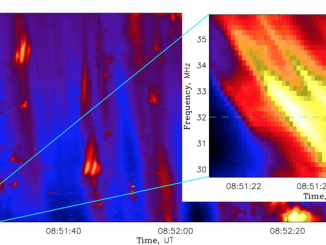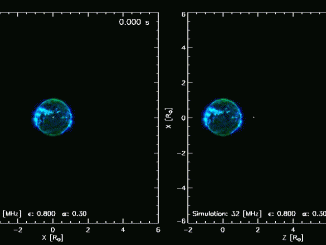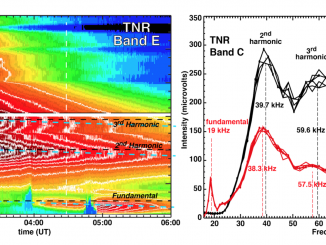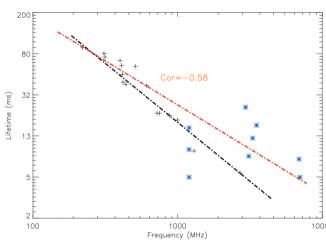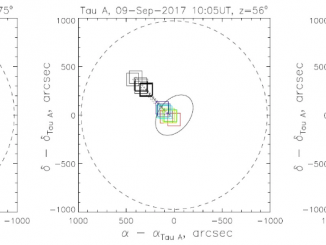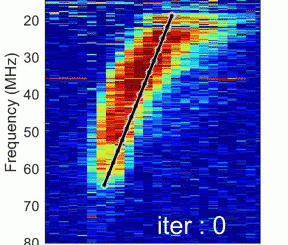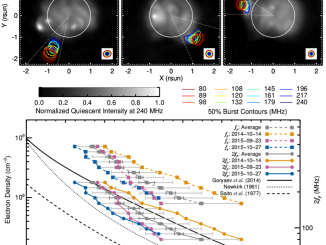First observation of the solar Type III burst decay and its interpretation
by V. Melnik et al*
Wild (1950) was the first to register and describe Type III bursts properties. These bursts are tracks of radio emission, which drift from high frequencies to low frequencies. Profiles of Type III bursts have a quick rise and slower fall. Wild supposed that electrons with high velocities, up to 0.3c (c is the speed of light), were responsible for Type III bursts based on their high frequency drift rates. Ginzburg […]


